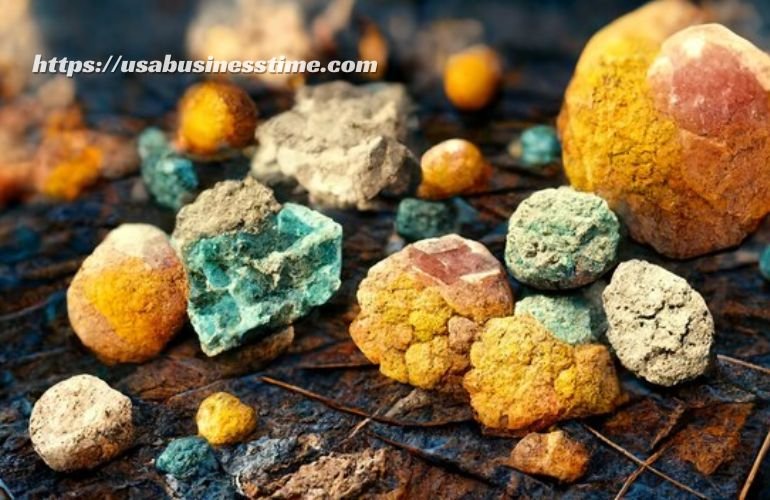The Asiri Stone is a remarkable artifact, shrouded in mystery and cultural intrigue. Found in an area rich with history, this stone stands out not only for its unique physical qualities but also for the captivating theories that surround its purpose. Some believe it served as an astronomical tool, while others link it to ancient religious practices. Its distinct carvings and symbols add to the enigma, drawing interest from archaeologists, historians, and collectors alike.
This article explores the Asiri Stone’s origins, characteristics, historical significance, and modern applications. Discover what makes the Asiri Stone so valuable, both as an object of beauty and a piece of cultural heritage.
Table of Contents
Geological and Physical Characteristics of the Asiri Stone
The Asiri Stone holds a unique place among geological specimens due to its distinct formation and striking appearance. Originating from deep within ancient rock formations, this stone reflects a composition that reveals clues about its age and the environmental conditions under which it formed. Its mineral content is rich and diverse, showcasing a blend of rare minerals that contribute to its enduring structure and appearance.
The stone’s color palette is equally notable, with shades ranging from deep, earthy browns to lighter, polished tones. This varied coloration not only adds to its aesthetic appeal but also points to complex geological processes such as mineral deposit layering and thermal variations over millennia. Each layer tells part of the stone’s history, revealing changes in temperature, pressure, and surrounding mineral deposits.
In terms of texture, the Asiri Stone features a polished surface that naturally reflects light, enhancing its visual allure. Tiny flecks of embedded minerals create a subtle, shimmering effect, especially under direct sunlight. This feature makes it a popular choice for decorative use, as the stone’s natural luster enhances any setting it is placed in.
Its durability is another defining trait. Composed largely of quartz-based minerals, the Asiri Stone is resistant to weathering and erosion, making it suitable for both indoor and outdoor applications. This resistance to natural wear has also allowed the stone’s original inscriptions and symbols to remain clear and legible, preserving its historical value and making it a favored piece for collectors and historians alike.
The stone’s physical attributes—color, texture, and durability—blend to form a visually and structurally remarkable artifact. Each feature adds to its appeal and hints at the natural processes that shaped it, grounding the Asiri Stone’s beauty in the complex and ancient geology that created it.
Historical and Cultural Significance of the Asiri Stone
The Asiri Stone has long been regarded as more than a geological marvel; it holds deep cultural and historical importance across various ancient societies. Thought to have been used as a tool, symbol, and even an artifact of spiritual significance, the Asiri Stone embodies values and beliefs that extend far beyond its physical properties.

In ancient communities, this stone often represented strength, endurance, and a connection to the earth. Its unique characteristics, such as durability and radiant color patterns, made it a symbol of resilience and beauty, qualities highly valued by the cultures that treasured it. Many believed the stone carried protective properties, using it in rituals and ceremonies aimed at bringing fortune and shielding against misfortune. This belief in its protective qualities contributed to its reputation as an artifact with mystical powers, often passed down through generations as a cherished heirloom.
The inscriptions and symbols carved into the stone provide further insight into its cultural significance. These carvings often depict scenes from daily life, celestial patterns, and symbols associated with deities, suggesting that the stone may have been used as a storytelling medium. Some historians believe these symbols served a practical purpose, possibly marking events, agricultural cycles, or astrological observations. This link between the Asiri Stone and the cycles of nature hints at a broader understanding of time and life held by the communities that revered it.
The stone’s role extended to social gatherings and spiritual ceremonies, where it was often placed at the center of rituals. This ceremonial use reinforces the belief that the stone acted as a conduit between the physical and spiritual realms, connecting the people to their ancestors and deities. The reverence for the Asiri Stone is also evident in the way it was preserved, often placed in sacred spaces or buried within important sites, further emphasizing its value.
Beyond its ceremonial use, the Asiri Stone’s enduring legacy is also tied to its role in ancient trade. Artifacts carved from it were frequently traded among regions, making it a symbol of cultural exchange and commerce. The trade routes that carried it from one community to another also spread the stories, beliefs, and traditions associated with it, expanding its influence and ensuring its place in the shared history of many civilizations.
The Asiri Stone’s historical and cultural significance is layered, woven with threads of spiritual beliefs, practical applications, and social meanings that have contributed to its lasting impact. Its presence across different periods and societies reflects the values and traditions of ancient civilizations, offering modern scholars a window into how people of the past understood and honored the natural world.
Unique Inscriptions and Symbolism
The inscriptions and carvings on the Asiri Stone provide a fascinating glimpse into the artistry and communication methods of ancient civilizations. These symbols, etched carefully into the stone’s surface, range from abstract shapes and geometric patterns to more recognizable images of celestial bodies and nature. Each carving reflects intentional design choices, possibly crafted to convey meanings, preserve knowledge, or commemorate events.
Some researchers believe these inscriptions served a functional purpose, marking time, cycles, or even navigational points. For example, certain symbols appear to represent lunar or solar patterns, suggesting the stone might have functioned as an early form of a calendar. If this is accurate, the stone could have played a role in guiding agricultural practices, helping ancient people track planting and harvest seasons according to celestial events.
In addition to practical uses, many of the carvings reflect deep spiritual or cultural symbolism. Specific symbols are associated with deities, animals, or natural elements, hinting at a connection to local myths and beliefs. These symbols likely played a part in religious ceremonies or rituals, possibly invoking protection, fertility, or prosperity. By incorporating images of the sun, stars, or animals, the stone may have been intended to invoke the powers or qualities these symbols represented.
Some of the most intriguing symbols on the Asiri Stone are those that do not correspond directly to any known language or writing system. These abstract markings have sparked debate among historians and archaeologists, with some suggesting they represent an ancient, lost language or a coded system of communication. Others believe they might be purely symbolic, meant to convey emotions, ideas, or spiritual concepts rather than words or phrases.
Modern interpretations of the carvings vary widely. Some researchers propose that the stone was used to preserve stories, recording important events or cultural narratives in a way that could be understood by others. Others see it as a form of artistic expression, a way for its creators to capture their relationship with nature, the cosmos, and each other. This symbolic language, regardless of its exact meanings, adds layers of depth to the Asiri Stone, making it a timeless artifact.
Overall, the inscriptions and symbols on the Asiri Stone serve as more than decorative details. They hold the potential to connect the present with the past, offering a tangible link to the beliefs, values, and everyday life of those who crafted them.
Theories on the Purpose and Use of the Asiri Stone
The Asiri Stone has sparked curiosity and debate among historians, archaeologists, and enthusiasts, each offering theories about its purpose and role in ancient societies. While the stone’s inscriptions and craftsmanship hint at its importance, its exact use remains an open question with interpretations ranging from practical to symbolic.
One prominent theory suggests that the Asiri Stone served as an astronomical or agricultural calendar. The symbols resembling celestial bodies could indicate a connection to seasonal cycles, helping ancient communities track changes in the environment. By aligning these symbols with solar or lunar movements, people may have used the stone to determine optimal times for planting, harvesting, and other seasonal activities essential for survival. This view positions the stone as an early tool for observing and interpreting natural cycles, valuable for any agrarian society dependent on seasonal rhythms.
Another perspective views the Asiri Stone as a religious or spiritual artifact. The recurring presence of symbols associated with deities and elements like the sun, moon, and stars suggests the stone held spiritual meaning. It may have been used in rituals designed to honor deities, bring blessings, or offer protection. By positioning the stone at ceremonial sites, ancient communities could have connected with their deities or invoked their powers. This sacred function would also explain the care taken to carve intricate symbols, as well as the tradition of preserving the stone in secure or hidden locations.
Some scholars propose the stone functioned as a social or educational tool, used to pass down knowledge or recount historical events. In societies with limited written language, symbols and carvings often served as records of shared experiences or collective knowledge. The stone’s carvings might capture local myths, recount battles, or celebrate significant events. This would make the Asiri Stone a communal record, preserving the history and teachings of those who created it for future generations.
Others suggest the Asiri Stone served a multifaceted role, blending practical, spiritual, and social functions. For example, it could have been used both as a calendar and in religious ceremonies, or as a means of recording history while also conveying astrological knowledge. This theory reflects the holistic worldview often seen in ancient cultures, where practical tools and spiritual artifacts were deeply intertwined.
Modern interpretations also include more speculative ideas, such as the possibility that the stone was created with an unknown, perhaps advanced, purpose. Some enthusiasts imagine it as an artifact linked to ancient technological knowledge or even as a relic from contact with distant civilizations.
While each theory brings a different perspective to the Asiri Stone, they all highlight its value within ancient societies. Whether a practical tool, a sacred symbol, a historical record, or a combination of these, the Asiri Stone holds a place of reverence and mystery that continues to fascinate.
Modern Interpretations and Conspiracy Theories
The Asiri Stone’s enigmatic qualities and unexplained inscriptions have fueled a variety of modern interpretations and conspiracy theories. These ideas, ranging from historical mysteries to extraterrestrial theories, illustrate the fascination that ancient artifacts hold and the speculation that surrounds them.

One popular theory proposes that the Asiri Stone is a relic from a forgotten advanced civilization. Proponents suggest that the precision and symbolism of the stone’s carvings indicate knowledge or skills beyond what is commonly associated with the era of its creation. According to this view, the stone is a surviving fragment from a culture that possessed sophisticated scientific understanding, potentially lost through natural disasters or shifts in civilization. This theory resonates with those who believe there are gaps in historical records, implying that humanity’s past might contain advanced societies now obscured by time.
Extraterrestrial theories also surround the Asiri Stone, inspired by the untranslatable symbols and the unusual craftsmanship. Some speculate that the carvings represent a language or code shared with beings from beyond Earth. Those who support this theory argue that the precision of the carvings, along with depictions that resemble celestial phenomena, hints at contact with otherworldly intelligence. This theory, while widely debated, taps into the allure of ancient astronaut ideas, suggesting that the stone could contain knowledge imparted by extraterrestrial visitors.
Another interpretation views the stone as a part of an ancient communication network, perhaps used to transfer knowledge across distant regions or civilizations. The carvings and symbols may have served as a universal language, understood by multiple cultures and used as a means of recording or exchanging information. This view aligns with the idea that ancient societies were interconnected, sharing beliefs, art, and knowledge through trade and exploration. The Asiri Stone, in this context, could represent a physical link between diverse communities, a tool of shared understanding in a world without written language.
There are also those who believe the Asiri Stone may have served as a philosophical or metaphysical artifact, created to represent the mysteries of existence itself. According to this view, the symbols and carvings are intentionally ambiguous, designed to provoke thought and introspection rather than convey specific messages. The stone’s creators may have sought to express the vastness of the unknown, prompting future generations to question their own understanding of life, nature, and the universe.
Though some of these theories lack substantial evidence, they reflect the enduring intrigue that the Asiri Stone inspires. Whether seen as an artifact of lost knowledge, a relic of cosmic origins, or a philosophical statement, the stone remains a source of wonder and speculation. Each interpretation, no matter how unorthodox, adds to the Asiri Stone’s mystique, ensuring its place in modern imagination as much as in ancient history.
Market Value and Rarity of the Asiri Stone
The Asiri Stone holds a distinct place in the market for rare stones and artifacts, valued not only for its beauty but also for its cultural and historical significance. Its rarity is a key factor in its desirability, as few examples with comparable qualities exist today. The blend of intricate carvings, historical value, and natural durability elevates its appeal among collectors and historians alike.
Pricing for the Asiri Stone varies significantly depending on factors like size, clarity, and the intricacy of its inscriptions. Stones with clear, legible carvings that preserve ancient symbols and inscriptions tend to command higher prices. The clarity and color depth of the stone, often characterized by natural striations and hues that reflect its unique mineral composition, also contribute to its value. Stones with a particularly rich color palette or those showing rare mineral inclusions may reach premium prices, appealing to collectors who value both aesthetic and historical qualities.
Another factor influencing the market value is provenance, or the documented history of ownership and discovery. Stones with a clear and verifiable history often carry greater value, especially if they can be traced to specific historical sites or significant archaeological findings. Documentation of origin not only provides authenticity but also adds a layer of historical storytelling, making each stone unique in its journey from ancient times to modern collections.
The limited availability of authentic Asiri Stones in the market also drives demand. Few regions have produced stones with similar characteristics, and artifacts of this type are rarely found in private collections or public auctions. The scarcity makes them coveted pieces, with some collectors willing to pay a premium to add such an artifact to their collection. Museums and private collectors alike often compete for these rare finds, seeking pieces that can enhance their collections and provide cultural insight for visitors or researchers.
The Asiri Stone’s durability contributes to its lasting value. Because it is resistant to natural weathering and maintains its clarity and inscriptions over time, it remains a reliable investment for collectors who are interested in artifacts that retain their quality. The stone’s natural resilience allows it to hold up well against the effects of aging, ensuring that it can be displayed or studied without significant degradation.
In the current market, the Asiri Stone is seen as both an investment and a historical asset, appealing to those who appreciate both its material beauty and its connection to ancient cultures. Its enduring rarity, combined with its historical and aesthetic qualities, ensures that it will remain a highly valued artifact in private and institutional collections alike.
Practical Applications and Design Uses of the Asiri Stone
The Asiri Stone’s unique characteristics make it a popular choice in modern design and architectural projects. Its distinct appearance, durability, and historical significance allow it to serve as both a functional and decorative element in various settings, bridging the natural beauty of raw stone with the timeless allure of ancient artifacts.
One of the most common uses of the Asiri Stone in design is as a feature piece in interior spaces. Its rich, earthy tones and textured surface make it ideal for creating statement walls or accent areas in homes, offices, or commercial spaces. When used as a focal point, the stone adds depth and a sense of heritage to a room, drawing attention with its intricate natural patterns and subtle luster. This application is particularly popular in spaces where a blend of rustic and modern aesthetics is desired, as the Asiri Stone harmonizes well with both natural and industrial materials like wood, metal, and glass.
In addition to wall installations, the Asiri Stone is frequently used in flooring. Its natural strength and resistance to wear make it well-suited for high-traffic areas such as entryways, halls, and lobbies. The stone’s surface can be polished for a smoother finish or left with a more rugged texture, depending on the desired look. In flooring, the Asiri Stone provides not only durability but also a unique visual character that adds sophistication and an earthy charm to any space.
Another application is in countertop design. Used in kitchens, bathrooms, or outdoor entertainment areas, the Asiri Stone offers a hard-wearing surface that can withstand regular use while bringing a natural elegance to the space. Its resistance to staining and scratching makes it a practical choice, and the stone’s rich color and natural patterns create an appealing contrast against lighter cabinetry or stainless steel appliances.
The Asiri Stone also holds value as a decorative item, often crafted into sculptures, tabletops, or custom art pieces. Artisans and designers appreciate the stone’s workability and aesthetic qualities, using it to create objects that highlight its natural beauty. The stone’s unique color variations and mineral flecks make each piece distinct, ensuring that any item made from it feels like a one-of-a-kind piece of art. Decorative items made from Asiri Stone can range from small ornaments to larger pieces, making it versatile for both subtle and bold design statements.
Outdoors, the Asiri Stone is popular in landscaping projects and can be used in garden paths, retaining walls, or as standalone decorative stones. Its durability under various weather conditions makes it ideal for exterior applications, allowing it to maintain its appearance and integrity in outdoor settings. Used in pathways or garden walls, the stone integrates seamlessly into natural landscapes, enhancing the environment with its organic look and feel.
For those interested in adding a sense of history and elegance to modern spaces, the Asiri Stone offers a unique material choice. Its applications in interior and exterior design, along with its capacity to serve both functional and aesthetic purposes, make it a prized element in contemporary architecture and decor.
Caring for and Preserving the Asiri Stone
Proper care and maintenance are essential to preserving the natural beauty and durability of the Asiri Stone, especially for those using it in design or as a collector’s piece. While the stone is known for its resilience, taking specific steps can help maintain its appearance and longevity for generations.

Routine Cleaning
For routine cleaning, a mild, non-acidic cleanser and soft cloth are generally recommended. Abrasive cleaners or materials can damage the stone’s natural polish, so it’s best to avoid them. A mixture of warm water and a gentle soap often works well to remove surface dirt without harming the stone. When wiping down the surface, use circular motions to keep the polish even and minimize streaks. After cleaning, a quick rinse with clean water followed by drying with a soft towel will help prevent any soapy residue from settling.
Avoiding Harsh Chemicals
The Asiri Stone’s mineral composition can react negatively to acidic or highly alkaline substances, which may dull its finish or cause etching over time. Cleaning products containing lemon, vinegar, or bleach should be avoided, as these can damage the stone’s natural surface. If the stone is used in kitchens, bathrooms, or outdoor areas, it’s helpful to wipe up any spills immediately to prevent staining or chemical reactions. Oil-based substances, wine, and acidic liquids like citrus juices can be particularly problematic if left in contact with the stone for extended periods.
Sealing for Extra Protection
Though the Asiri Stone is highly durable, applying a sealant can provide an added layer of protection, especially for stones used in high-traffic areas or as countertops. A sealant helps prevent stains and moisture absorption, reducing the risk of damage from spills. The frequency of sealing can depend on the specific use and exposure of the stone, but generally, a sealant should be applied annually. For best results, consult a professional familiar with the specific requirements of the Asiri Stone to recommend a sealant that will not alter its natural color or texture.
Temperature and Environmental Care
While the Asiri Stone is resistant to most environmental factors, extreme temperature changes can cause expansion or contraction that may affect its structure. For outdoor installations, consider placing the stone where it will have some protection from direct, prolonged exposure to harsh weather. In areas with fluctuating temperatures, the stone may benefit from routine inspection to identify any potential cracks or signs of stress.
Handling and Storage for Collectors
For those keeping the Asiri Stone as a collectible, proper handling and storage play a significant role in its preservation. Always handle the stone with clean hands to prevent oils and residues from transferring onto the surface. When storing the stone, keep it in a padded or soft-lined container to prevent scratches and damage from accidental impacts. It is best to store it away from direct sunlight, which could potentially alter the stone’s color over time, especially if it has a natural or untreated surface.
Regular Inspections
Routine inspections can help identify any signs of wear or damage early. Look for changes in the stone’s polish, any small cracks, or signs of discoloration. Addressing these issues promptly can prevent minor problems from becoming larger ones. For larger installations, such as flooring or wall features, periodic professional assessments can help maintain the integrity of the stone over time.
With thoughtful care, the Asiri Stone can retain its stunning appearance and resilience, allowing it to be enjoyed as a timeless piece of nature and history. Proper maintenance ensures that the stone continues to reflect its natural beauty and historical essence, whether in decorative, functional, or collectible settings.
Conclusion
The Asiri Stone stands as a testament to both the beauty of natural formations and the cultural depth of ancient societies. From its intricate inscriptions and unique physical qualities to its place in modern design, the stone continues to fascinate and inspire. Whether valued as an artifact of historical importance or a rare addition to modern spaces, the Asiri Stone bridges past and present, carrying forward the mysteries and artistry of those who once revered it. This remarkable stone, preserved and respected, remains a symbol of resilience, creativity, and the timeless human connection to nature.











